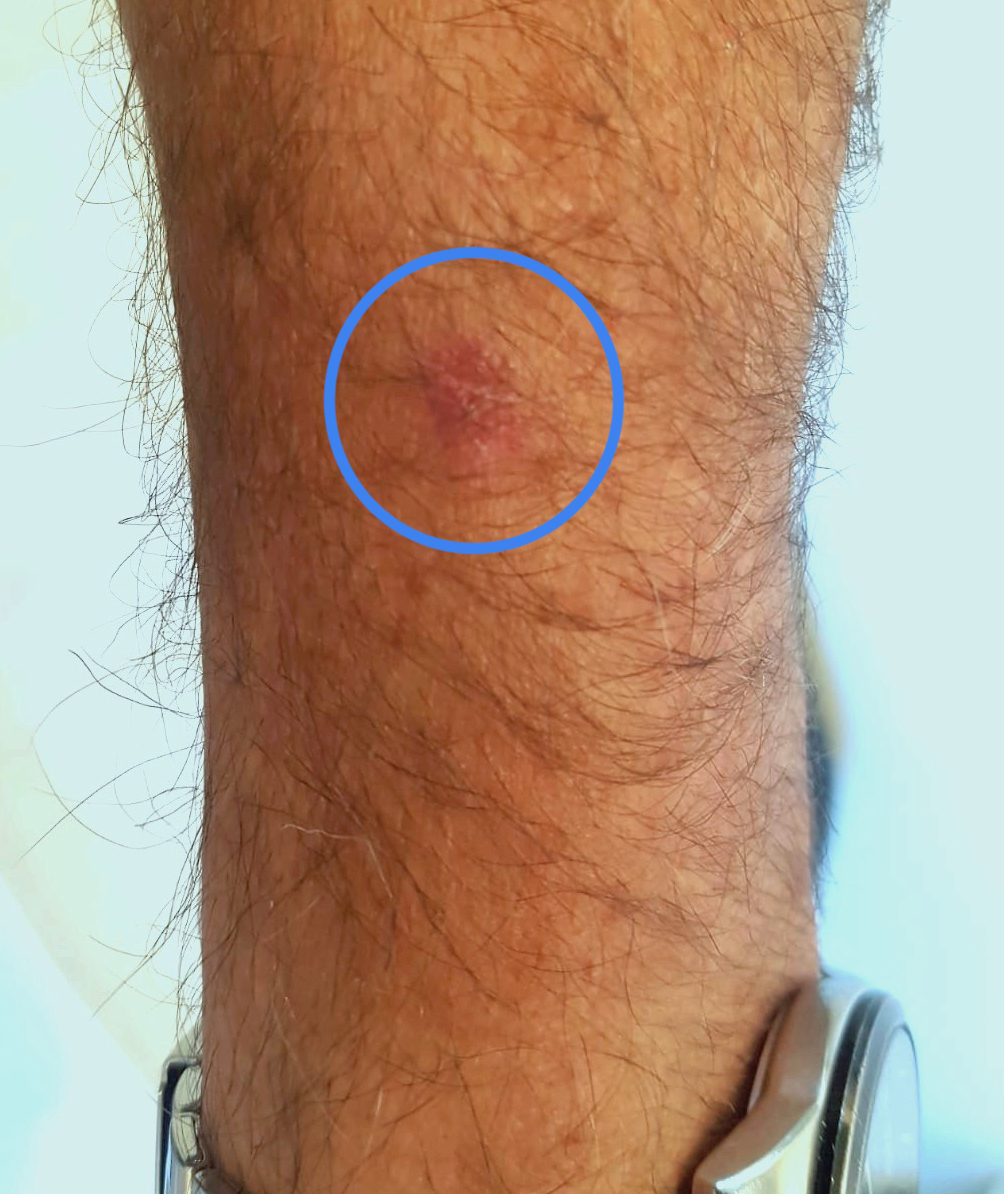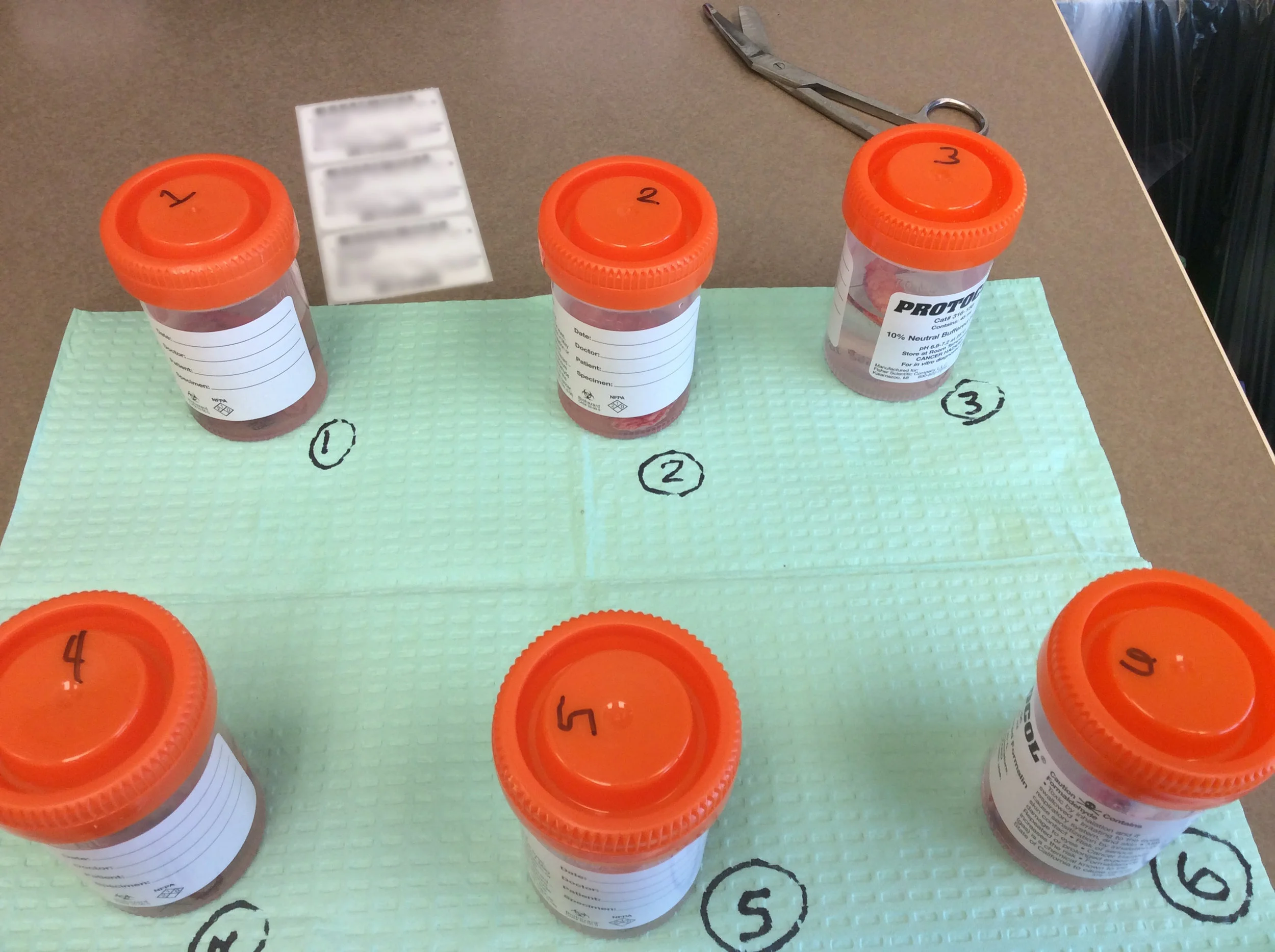EMPD Photos
What Does extramammary Paget's disease (EMPD) look like?
EMPD Symptoms
Read More →Extramammary Paget's disease (EMPD) is a rare malignancy that can appear around the genitals, anus, perineum, groin or arm pit areas in women and men. Left untreated it can be lethal. It's not unusual for EMPD patients to undergo lengthy ineffective treatments before a correct EMPD diagnosis is made.
Extramammary Paget’s disease (EMPD) often appears as a scaly, itchy or red area within the genital region. The cancer is extremely rare, generally slow growing, and is often misdiagnosed as eczema. The prognosis and recovery from EMPD is often good, especially if it is found and treated early. However some cases of EMPD can be more aggressive, invading the dermis and subcutaneous tissue.
Extramammary Paget’s disease (EMPD) is a rare skin cancer that can appear around the genitalia, groin and perianal regions. If you have redness or a rash that won't go away in these areas, you are encouraged to visit a doctor.
Extramammary Paget’s disease (EMPD) sometimes appears in a similar fashion to “jock itch” around the vulva or anus in women and in extremely rare cases around the penis, scrotum, groin and perianal region in men. In other cases it is often misdiagnosed as eczema.
A rash in the genital region is not always just a rash. While extramammary Paget's disease (EMPD) is rare it can spread if left unchecked.
Mohs micrographic surgery is a unique surgery technique that was created by Frederic Mohs in 1938. A Mohs surgeon typically examines tissue under a microscope during or following the procedure.
In limited cases, extramammary Paget’s disease (EMPD) can spread to areas outside the genital region.
Typically extramammary Paget’s disease (EMPD) will appear in the genital, anal or arm pit areas in women and men. However, in the rarest of rare cases it can appear elsewhere such as the buttocks, thigh, leg, arm, eyelid, scalp, nose, temple and external auditory canal. In this photo EMPD appears on the arm.
Taking multiple 'scouting' biopsies is often a precursor to extramammary Paget’s disease (EMPD) surgery. Biopsies can help physicians understand the extent of the EMPD.
Documentation of rashes or skin discoloration can be helpful in determining if extramammary Paget’s disease (EMPD) is spreading. Photographing these areas can be useful to your physician as they determine the diagnosis and ultimate treatment.
Biopsies are a key factor in finding extramammary Paget’s disease (EMPD). Pathologists then play an important role in examining tissue to determine if you have EMPD.
Local anesthesia is often used with Mohs micrographic surgery. During Mohs surgery, the physician will generally use a microscope to exam tissue being removed, thereby reducing the guesswork in the procedure.
Slow Mohs is a modified form of Mohs micrographic surgery and is often used in EMPD treatment. Slow Mohs also involves a margin-controlled excision but the samples are sent to a pathologist, with rush orders, rather than being reviewed in the surgical suite by the Mohs surgeon. Slow Mohs is often used when the tumor has histological subtleties or when a substantial amount of tissue is expected to be removed. The technique requires detailed communication between the Mohs surgeon and the pathologist.
A comfortable exam room reduces the stress associated with an extramammary Paget’s disease (EMPD) examination.
In vivo reflectance confocal microscopy (RCM) is a non-invasive imaging technique that allows pathologists to view skin conditions in real time. In the case of EMPD, confocal imaging can help cover a larger area than individual biopsies.
Labeling and tracking tissue samples is a key to tracking extramammary Paget’s disease (EMPD). This process is often used with slow Mohs.
Slow Mohs is a modified form of Mohs micrographic surgery and is often used in EMPD treatment.
Mohs micrographic surgery is often used in treatment of extramammary Paget’s disease (EMPD) when the area of EMPD is confined.
The content on this website, including text and visual materials, is intended to raise awareness of extramammary Paget’s disease (EMPD) and help individuals understand its complexities. However, it is not a substitute for professional medical advice, diagnosis, or treatment, nor does it endorse any specific treatments, tests, physicians, procedures, or products. If you suspect symptoms of EMPD, we encourage you to consult a qualified healthcare provider for proper evaluation and guidance.
















